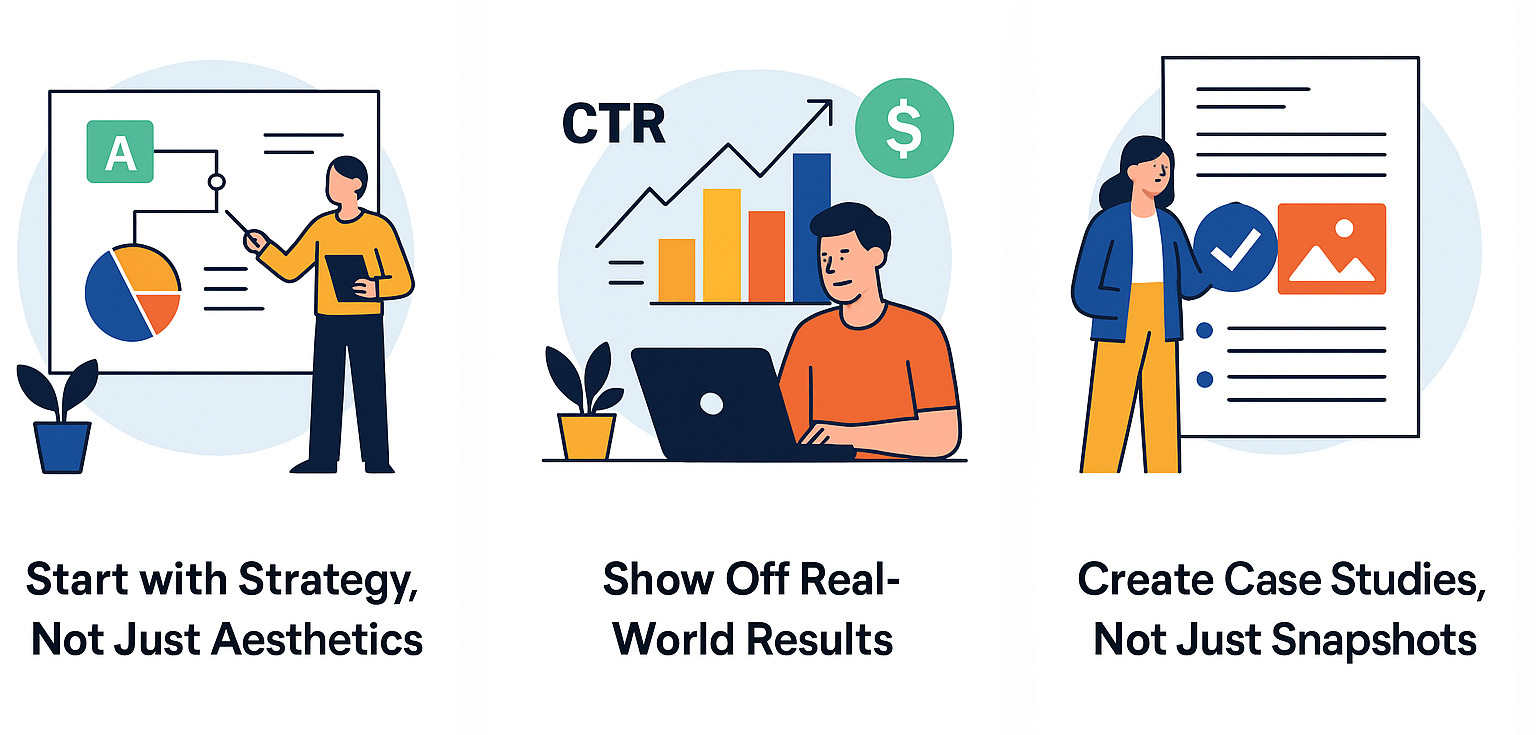In today’s fast-paced digital world, standing out means showing—not just telling—what you can do. Whether you’re a digital marketer, marketing manager, account coordinator, graphic designer, or social media manager, having a strong portfolio is key to landing clients, jobs, or freelance gigs. The good news? There’s a lot of crossover in your work, and that means your portfolio can serve multiple purposes if you build it smartly. It can also be used as a way to earn potential clients, but it is sometimes good experience to start working with in-house marketing team or agency to start as you continue to grow.
Here are our top tips to help you create a versatile, results-driven portfolio:
1. Start with Strategy, Not Just Aesthetics
Your portfolio isn’t just a gallery—it’s a story. Start by thinking about:
-
Who your audience is (Potential clients? Employers? Agencies?)
-
What type of work you want to get more of
-
Which industries you specialize in or want to break into (You can try and work on projects that show your expertise and design to work in a certain industry.)
Tailor your content and layout accordingly. For example, if you’re aiming for startup clients, your portfolio should highlight work that reflects agility, growth strategy, and results.
2. Show Off Real-World Results
No matter your role, metrics matter. This is something that you might have to work towards as you get more real world experience and start to build up your portfolio.
-
Digital Marketers: Highlight campaign KPIs—CTR, conversion rate, ROI.
-
Social Media Managers: Include engagement rates, follower growth, viral posts.
-
Graphic Designers: Add how your designs impacted brand awareness or conversions.If just starting off, you can focus on the strategy of the creative.
Pair visuals with context: what was the goal, what did you do, and what was the outcome? This shows that you don’t just create—you solve problems.
3. Create Case Studies, Not Just Snapshots
It’s tempting to upload a carousel of images, but deeper insights set you apart. Turn select projects into short case studies with this format:
-
The Brief: What was the objective?
-
Your Role: What specifically did you contribute?
-
The Process: How did you approach the project?
-
The Results: Back it up with data or feedback.
This format works for all three roles and demonstrates professionalism and strategic thinking.
4. Curate, Don’t Dump
More isn’t better—relevance is. Choose 5–10 of your best, most recent, and most relevant projects. A lean, high-impact portfolio is more compelling than one filled with outdated or mediocre work. You can add more then 5-10 pieces if they are quality. The goal at the end of the day though, is to put your best foot forward. You will start to add or remove certain projects as time goes on.
Consider organizing by category or service (Sometimes you will also organize by brand if you have a brand that you did a lot of projects for.)
-
Campaigns
-
Branding
-
Ad Creative
-
Social Media Content
-
Web Design or UX/UI
- Etc.
5. Include Testimonials or Social Proof
A quote from a happy client or a manager can go a long way. These are easy to source via LinkedIn, email, or even screenshots. Even if you’re early in your career, a short testimonial builds credibility. (Many jobs will also ask for some letter of recommendations.)
6. Don’t Skip Your “About” and Contact Info
People hire people, not portfolios. Include a brief, personable bio that explains who you are, what you specialize in, and what you’re passionate about. Make sure your contact info is easy to find—or better yet, include a contact form.
If you’re a freelancer, consider adding your availability and pricing structure (if appropriate) but sometimes it is better to leave this for a follow up.
7. Use the Right Tools
Some great portfolio platforms that work well across creative and marketing roles include:
-
Adobe Portfolio (great for visual work)
-
Behance (for designers and other creatives)
-
Any Design or Layout Program For PDF Portfolio
-
WordPress / Webflow / Wix (for a more custom experience)
Social media managers and marketers can also use Google Slides or PDF case studies for a more corporate audience.
8. Keep It Updated
Your portfolio should evolve with your skills. Make a note to update it every few months—new clients, new wins, better content. A stale portfolio won’t reflect your current capabilities.
Bonus Tip: Learn & Build at the Same Time with Palm Beach Code School
If you’re just starting out or looking to pivot into digital marketing, graphic design, web development, filmmaking, or social media management, Palm Beach Code School offers hands-on training that can help you build your portfolio as you learn. Their real-world projects and career-focused curriculum are designed to help you walk away with not just knowledge—but work you can proudly showcase.
Whether you’re refreshing your skills or stepping into the digital space for the first time, Palm Beach Code School is a great place to begin building both your portfolio and your confidence.
Final Thoughts
Building a strong portfolio takes intention, not just content. Whether you’re a digital marketer focused on data-driven growth, a designer passionate about visual storytelling, or a social media manager juggling strategy and creativity —your portfolio is your stage. Make it count. Even if you’re aiming for roles like account coordinator or project manager rather than creative ones, it’s still valuable to showcase the projects you’ve contributed to—some account execs have portfolios that rival those of designers. Portfolio building is a key part of your experience in the Digital Marketing Program at Palm Beach Code School.







Recent Comments